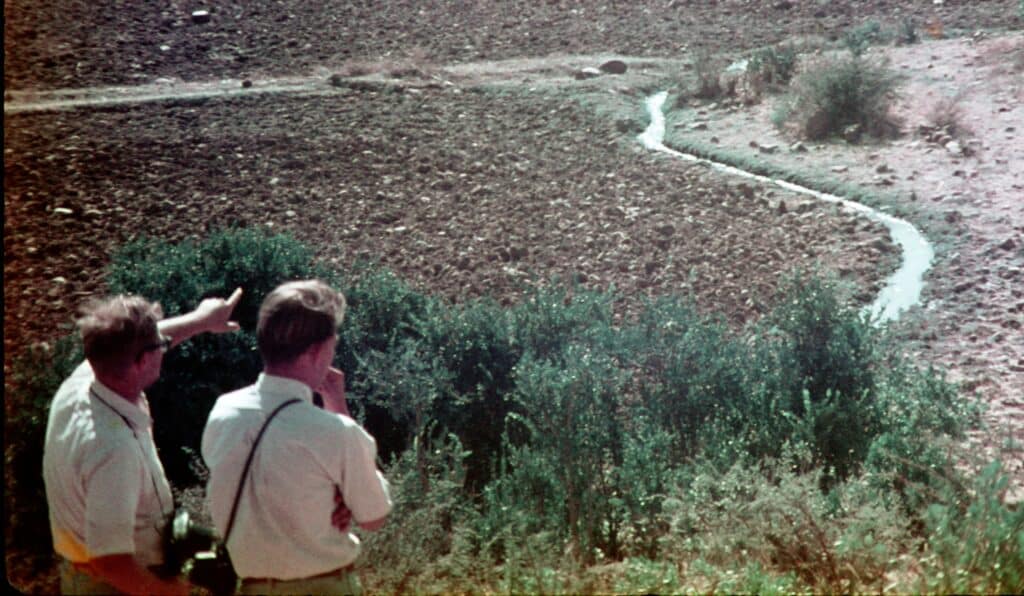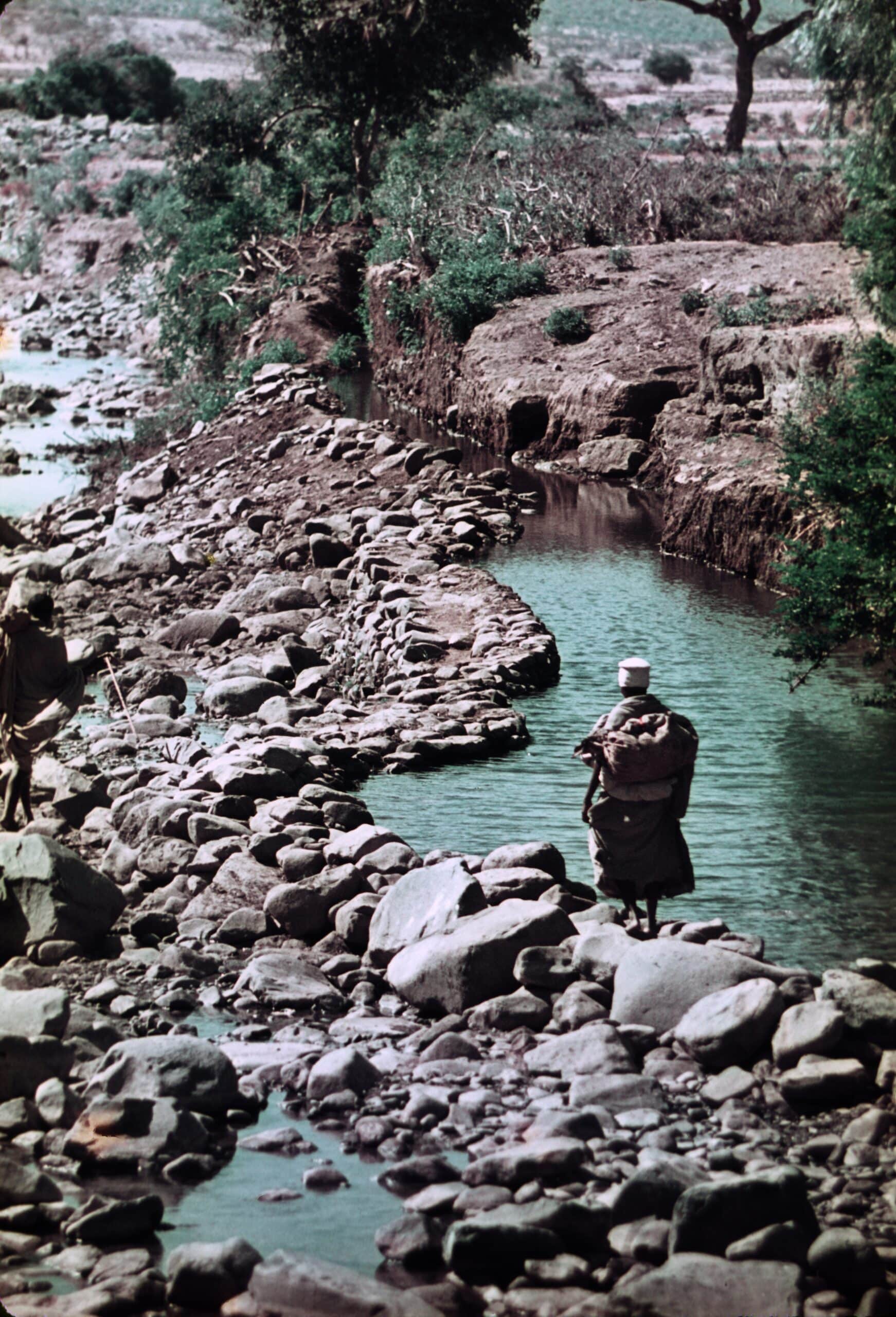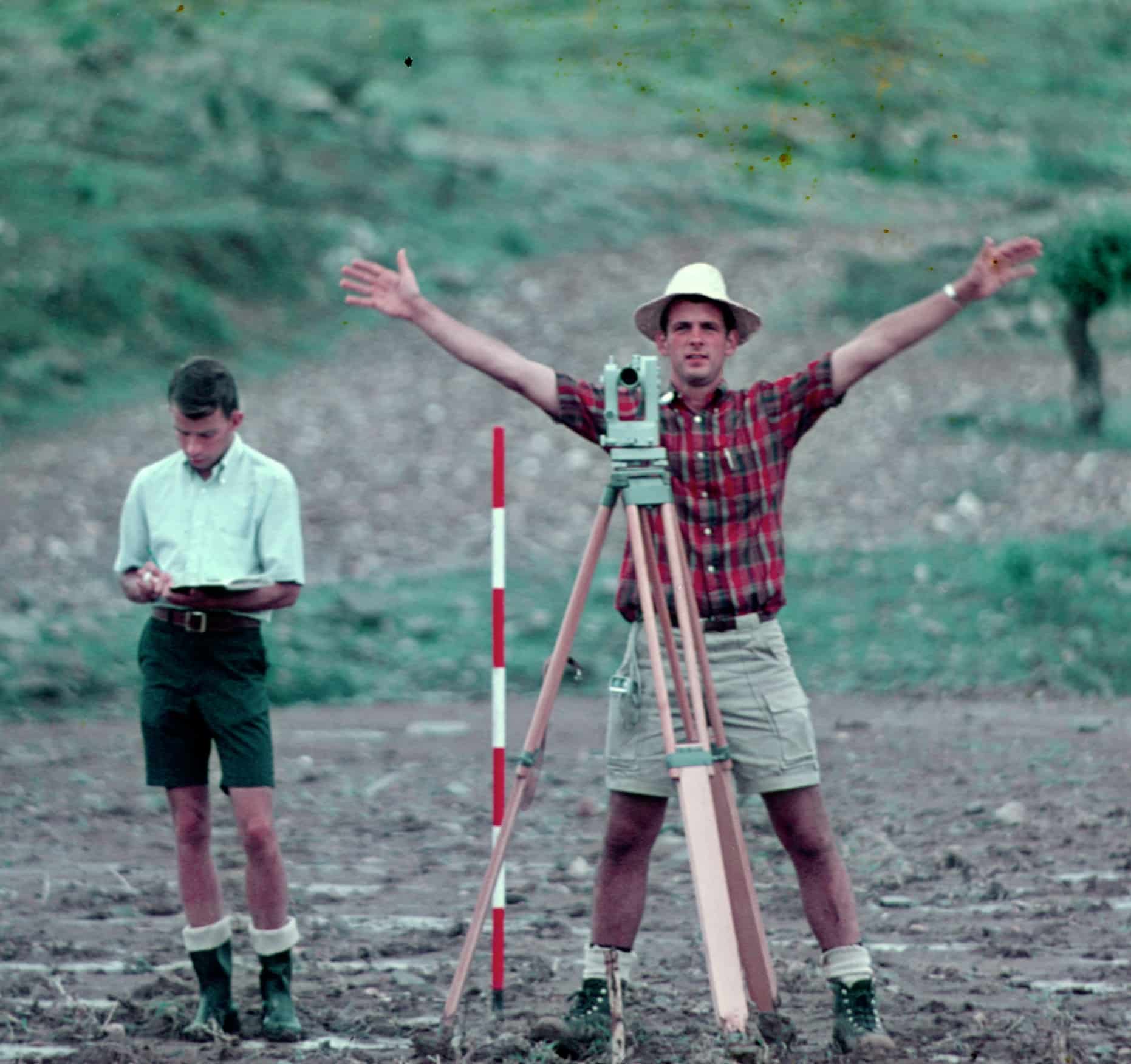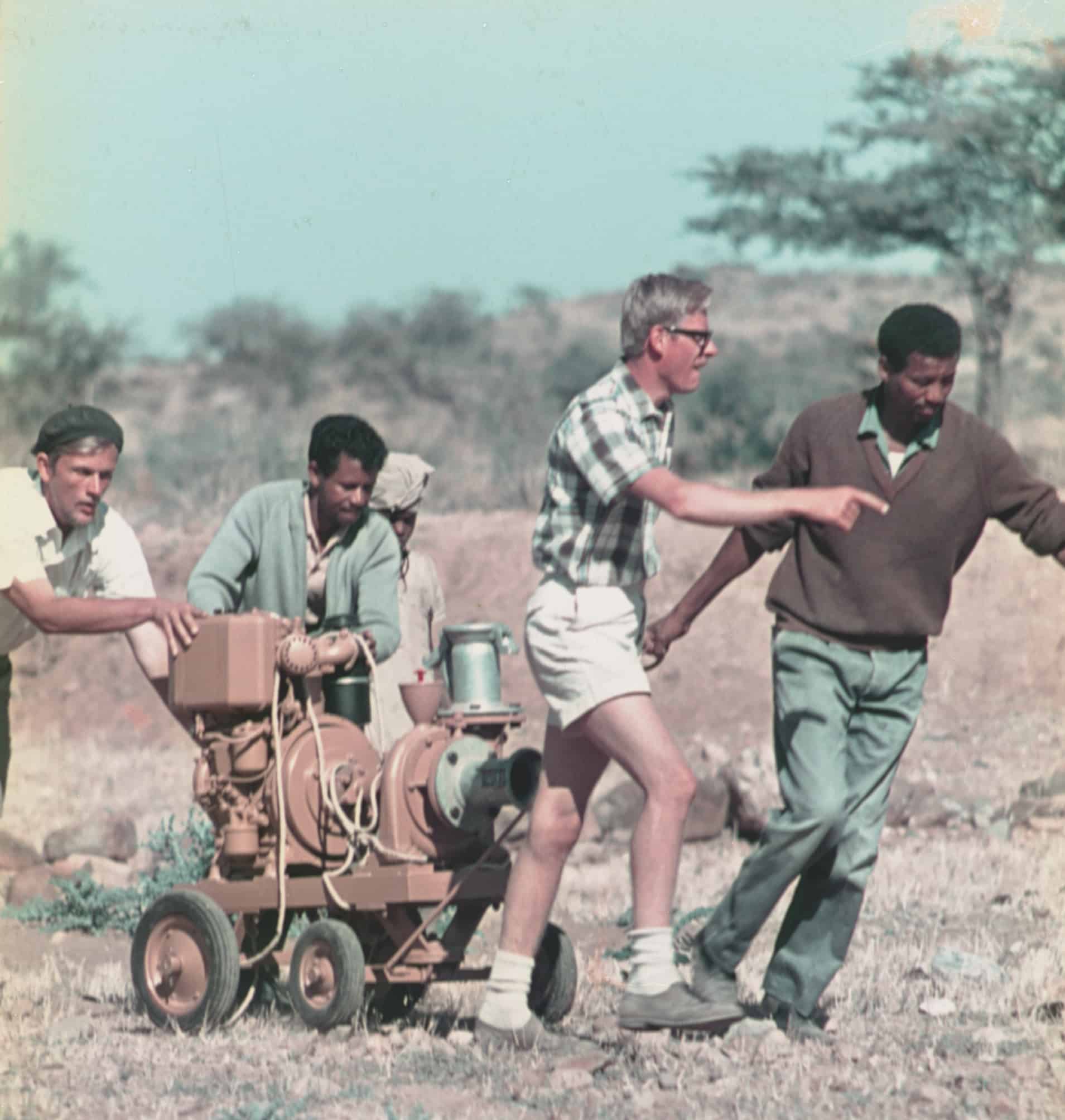Our project’s goal in 1967–68 was to promote irrigation cooperatives in Ethiopia’s Tigray province. Our group of around a dozen PCVs spent part of the summer of 1967 at Alemaya College of Agriculture learning about farming, and the rest of the summer surveying fields in two Tigray villages and drawing contour maps. This was definitely not the dry season, and two of us nearly drowned, but that’s another story.
Tigray’s governor, His Highness Ras Mengesha Seyoum (known to us all as “HH”), called a meeting of the farmers of the village of Tseluwey to talk up irrigation. The farmers were reluctant, but finally two of them agreed to let their fields be irrigated, their misgivings evidently overcome by their respect for HH, whose lineage was said to outclass that of Emperor Haile Selassie.

So two volunteers —Bob Roundy and Homer “Butch” Hayes— rented a tukul (a little house) in Tseluwey, brought in a pump and some pipes, and began working with the two willing farmers. A few weeks after they moved in, I wrote
All isn’t well in Tseluwey. The farmers haven’t been cooperating at all, neither helping with the irrigation nor even showing up to plow their land after it’s been irrigated.
A day later I wrote:
Today I took the truck out to Tseluwey. During lunch in Bob and Butch’s new house, they mentioned that the Tseluwey farmers had an irrigation project of their own in another valley, which they had only found out about at Timket [a religious celebration], when they went to the village church. I suggested we take a look, so off we went down the mountain.
I certainly wasn’t prepared for what we saw. The stream has been dammed at two points and from each a well-built canal runs along the bank for a little way and then out into the fields. The fields themselves are well laid out and leveled, and farmers were hard at work in several of them, plowing and ditching in preparation for planting. In short, they were doing or had done everything we’ve hoped to accomplish with our project, without benefit of pumps or outside interference. I suppose the reason they never mentioned it to any of us is that we never asked. . . . We wonder whether the farmers kept quiet about it in order not to be assessed extra taxes. Wouldn’t it be great if the only result of our project were to expose their secret and cause their taxes to be raised?
The natural reaction is to pack up and get out. But I have a feeling that in a way we are way ahead of where we thought we were, if only we can overcome the farmers’ suspicions of anything that smells of government. By constructing the canals, they’ve proved that they can get together in a common effort, and sharing the water is no mean feat of cooperation. From there to our original goal of a co-op which could own pumps, buy fertilizer, and market the produce is not such a big step.The Italian farmers have proven that the land can be made far more productive, and it seems logical to try to help TDO [Tigray Development Organization] and the Min of Ag find a way to help the farmers make more from what they have.
We later learned how the farmers’ irrigation project got started. One of the farmers had fought with an Ethiopian Army battalion in the Korean War. On their way back to Ethiopia, the troops had stopped over in Egypt, where the Tseluwey farmer had seen how his Egyptian counterparts were irrigating from the Nile. Inspired by that example, he had recruited his fellow farmers to build, maintain, and operate an irrigation system of their own.
When HH found out about the secret project, he called another meeting of the farmers, who probably thought they’d be lucky to escape with a tongue-lashing. On the contrary, HH lavished them with praise. He told them their project was a model for the nation, and later sent groups of them around the province at his personal expense to promote irrigation.
After my two-year Peace Corps stint ended in mid-1968, I heard through the grapevine that the Tseluwey farmers had incorporated the diesel pumps and pipes into their operation, extending irrigation to fields that their canals could not reach. I’ve had no news from Tseluwey since then. A little web browsing reveals that irrigation in Tigray has become commonplace, but nothing about the village whose farmers were Tigray’s irrigation pioneers.






